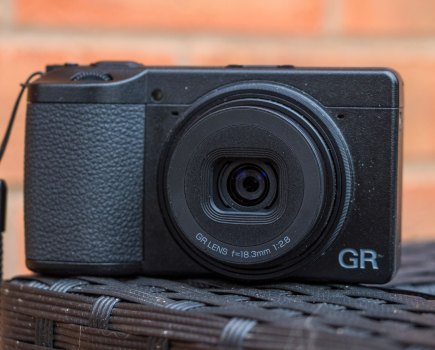Perceived wisdom places the smartphone as the nemesis of the dedicated, standalone digital camera. It’s true most manufacturers ditched their formerly high-volume selling compacts as most of us concluded the camera in our phone was ‘good enough’ and sometimes much more convenient – especially for quickly sharing pictures with friends, family and followers.
Rapidly, Canon, Nikon, Fujifilm et al releasing a ‘collection’ of half a dozen point-and-shoots and super zooms each spring, summer and autumn became a thing of the past. Even if some models, like the Nikon Coolpix range, have had a viral resurgence since.
Mostly, the cameras that survived this technological purge were either the higher end interchangeable lens models supported by photo enthusiasts and pros, or those that were literally the strongest, by which I mean waterproofed, drop-proof and crushproof toughened compacts from the former Olympus and Pentax/Ricoh.
These were/are cameras that could offer me something over and above what a smartphone could; whether that be stunning, cutting-edge image quality from the latest full frame sensor coupled with top tier glass, or a camera that I could take into the ocean or on to the ski slopes and not worry about it getting trashed. Unlike the latest iPhone or must-have Android device.
One thing that the smartphone has done, directly or indirectly, is push up the cost of today’s digital cameras, as they seek to differentiate themselves further from our phones. On the plus side, dedicated cameras now offer us even more reasons to buy, in being crammed full of the latest tech, including AI enabled auto focus, while offering users that tactile, hands-on quality their phone’s touch screen cannot, by way of rangefinder like dials, levers and physical buttons.

Even Fujifilm’s latest point-and-shoot instant cameras are getting in on the act, with the Instax Wide Evo combining digital know-how with retro analogue controls such as a pseudo film rewind lever that instead provides a bit of theatre as a print is generated. Yes, it’s twice the price of a fully analogue Instax, but it does feel like the manufacturer is showing increased ambition. Which ultimately is good news for photo fans.
Still, today’s digital camera has now by-and-large become a luxury item. Models such as the OM System OM-3 and Fujifilm X100VI at the more affordable end of the mirrorless camera market, when compared to the wallet-busting likes of the Sony A1 II or A9 III, are designed and marketed to be covetable as well as functional. Demand often outstrips supply, giving us more reason to jump in and pre-order as soon as announcements are made. And with good reason; today’s digital cameras may be pricey, but they’re also the best the format has ever seen.
At the same time compact cameras are making something of a comeback as we’ve previously acknowledged, particularly those that again serve a function that differentiates them from a smartphone. For example, having an optical zoom lens built in that goes further than the bog standard 3x, like the Panasonic Lumix ZS99/TZ99 with its 30x reach. The only issue is that 15 or 20 years on from their former heyday, such cameras aren’t $199 or $249 anymore. But then neither are smartphones.
Related reading:
- Best camera phones for photography
- The best budget camera phones – great snaps for every price
- The best mirrorless cameras you can buy right now
The views expressed in this column are not necessarily those of Amateur Photographer magazine or Kelsey Media Limited. If you have an opinion you’d like to share on this topic, or any other photography related subject, email: ap.ed@kelsey.co.uk







